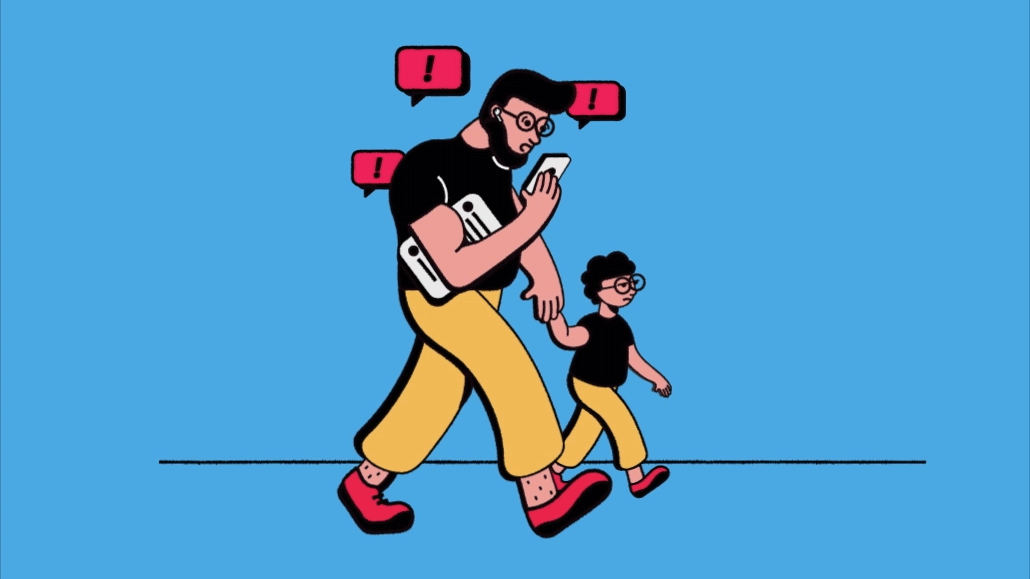The Rundown: How mobile app developers are taking cues from the mobile gaming space

Mobile app use has skyrocketed during the COVID-19 pandemic, and mobile gaming is leading the charge. Between Q2 2019 and Q2 2020, mobile app purchases grew 15% year-over-year on iOS and 25% on Google Play, with games as the largest and most rapidly growing category on both platforms, according to a report by App Annie, which did not detail exact growth figures.
As mobile gaming gains momentum, app developers elsewhere in the mobile space are applying lessons from gaming to apps in disparate categories such as fitness and cryptocurrency. Digiday chatted with four mobile developers across the industry to learn why they are taking cues from the gaming space — and how they are applying these techniques to their non-gaming apps.
The key details:
- Mobile game developers were early to realize the importance of treating apps as social networks in their own right and tapping into networks of dedicated mobile users, rather than relying on pre-existing user networks such as Facebook or Google. “Historically, non-gaming has been super-reliant on social networks, and very often that has been the only true channel of growth,” said Daniel Tchernahovsky, vp of international business development at the marketing software company AppLovin. “In gaming, the process has been a little bit different: from very early stages on, it wasn’t just social networks, it was actually networks such as ourselves and some of our competitors. So there was always the understanding that you need to go beyond, and that the users are not just the users that you find on Facebook.”
- Mobile developers have historically been partnered with large numbers of brands or companies in order to spread the word about their products, a tactic that is becoming increasingly popular throughout the mobile industry. According to his company’s research, Tchernahovsky said, mobile developers’ average number of brand partners is six to nine; “in non-gaming, this number is often four, and in crypto, it’s even three, because crypto apps can’t work with Facebook or Google often.”
- While the practice of A/B testing far predates the mobile gaming industry, mobile developers have “an obsession with A/B testing,” according to Francesco Mancone, head of marketing technology at the Italian mobile app firm Bending Spoons. Mancone and his colleagues used this technique to develop and streamline their own game app, Live Quiz, in addition to other commercial apps such as the fitness app 30DayFitness. “I do think that particularly gaming has applied A/B testing at the core of its product,” Tchernahovsky said.
- Mobile developers outside gaming are bringing interactivity and gamification into their in-app advertisements to keep users engaged and even improve their experiences, much like in-game ads. “In the gaming industry, this is a very important topic; it’s a fundamental factor for delivering high-quality ads,” Mancone said. “And this is something that we have been doing at Bending Spoons since the beginning.”
A converging workforce
One reason why app developers across the mobile space are taking cues from mobile gaming companies is that non-gaming companies have spent the last few years making strategic hires from the gaming sector. The mobile space is littered with developers, marketers and executives with roots in the gaming world. “There’s quite a bit of overlap, from a marketing perspective,” said Advit Sahdev, vp of marketing at the cryptocurrency exchange platform CoinDCX. “One of the common things is that we have very similar marketing channels that are available.”
The poaching of mobile gaming talent is not limited to the mobile app industry. In July, Netflix hired Mike Verdu, a former Zynga executive, to head up its gaming department.
A diverse audience
Mobile gaming developers might be more nimble than other developers in the mobile space because they have had to fight against antiquated misconceptions about gamers to expand their user bases. Tchernahovksy and his peers believe that the process of mobile app development will only become more streamlined — and even more applicable to app development across the industry — as the definitions of both game and gamer continue to widen.
“I think gaming has gotten to a penetration of all demographics now. We’re being asked this question a lot, which is, ‘what’s your average age group, what’s the gender split?’” Tchernahovsky said. “It’s never been something that’s too important for us, because of the scale at which we operate, or gaming operates.”
More in Marketing

Best Buy, Lowe’s chief marketing officers explain why they launched new influencer programs
CMOs launched these new programs in response to the growing importance of influencers in recommending products.

Agencies create specialist units to help marketers’ solve for AI search gatekeepers
Wpromote, Kepler and Jellyfish practices aim to illuminate impact of black box LLMs’ understanding of brands search and social efforts.

What AI startup Cluely gets — and ad tech forgets — about attention
Cluely launched a narrative before it launched a tool. And somehow, it’s working.








